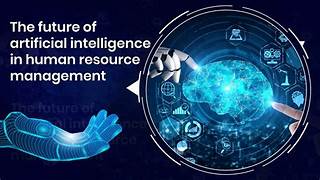The Potential of AI in Enhancing Human Capabilities
Artificial intelligence (AI) has emerged as one of the most transformative technologies of the 21st century, influencing every aspect of human life. While much of the focus has been on automation and efficiency, AI also holds immense potential to enhance human capabilities, empowering individuals and societies to achieve more than ever before. This article explores how AI augments human abilities in various domains, the challenges it faces, and the future possibilities it offers.
Understanding AI’s Role in Augmentation
AI augmentation refers to the use of AI technologies to amplify human cognitive, physical, and emotional capacities. Rather than replacing humans, augmentation aims to enhance human potential, enabling individuals to perform tasks more effectively and creatively. From healthcare to education, AI is driving innovation by working in tandem with human expertise.
Cognitive Augmentation
1. Enhanced Decision-Making
AI-powered tools analyze vast datasets, providing insights that aid in decision-making. For instance, in industries like finance and healthcare, AI models can predict market trends or diagnose diseases more accurately and quickly than traditional methods. These insights allow professionals to make informed decisions, reducing risks and improving outcomes.
2. Improved Learning and Skill Development
AI is transforming education by personalizing learning experiences. Adaptive learning platforms use machine learning algorithms to assess individual student needs and tailor educational content accordingly. For example, language learning apps like Duolingo leverage AI to identify user weaknesses and adapt lessons for better comprehension.
3. Creative Collaboration
AI enhances human creativity by acting as a collaborative partner in fields like art, music, and design. Tools like generative AI models create new possibilities for creative expression. For instance, artists can use AI to generate unique visuals, while musicians can experiment with AI-composed melodies.
Physical Augmentation
1. Assistive Technologies
AI-powered assistive devices are transforming the lives of individuals with disabilities. For example, AI-driven prosthetics provide more natural movement, while voice-activated systems like Siri and Alexa enable greater accessibility for those with mobility challenges.
2. Enhanced Human Performance
In sports and fitness, AI is optimizing performance by analyzing biometric data and providing personalized training recommendations. Wearable devices like smartwatches use AI to monitor health metrics, enabling users to improve their physical well-being.
3. Robotic Exoskeletons
AI-powered exoskeletons are revolutionizing industries that require heavy physical labor. These devices assist workers by amplifying their strength, reducing fatigue, and preventing injuries. In healthcare, robotic exoskeletons are aiding rehabilitation by helping patients regain mobility after injuries or surgeries.
Emotional Augmentation
1. Mental Health Support
AI-driven applications like chatbots and virtual therapists provide accessible mental health support. These tools use natural language processing (NLP) to engage with users, offering coping strategies and emotional support. For example, platforms like Woebot and Wysa have demonstrated their effectiveness in addressing anxiety and depression.
2. Enhanced Empathy in Communication
AI tools analyze emotional cues in conversations, helping individuals and organizations improve communication. In customer service, AI can detect customer frustration and provide agents with real-time guidance to resolve issues empathetically.
3. Building Emotional Resilience
AI-powered mindfulness apps like Headspace and Calm offer guided meditation and stress management techniques. These platforms use user data to recommend personalized exercises, helping individuals build emotional resilience over time.
Benefits of AI-Driven Augmentation
1. Increased Efficiency and Productivity
AI reduces the time required to perform complex tasks, enabling individuals to focus on higher-value activities. This efficiency enhances productivity across industries, from manufacturing to healthcare.
2. Improved Accessibility
AI technologies make information and services more accessible to diverse populations. Voice recognition, real-time translation, and assistive devices bridge gaps for individuals with disabilities or language barriers.
3. Empowerment Through Personalization
By tailoring solutions to individual needs, AI empowers users to achieve their goals. Whether it’s personalized learning, fitness plans, or mental health support, AI ensures that users receive targeted assistance.
Challenges and Ethical Considerations
1. Bias and Fairness
AI systems are only as unbiased as the data they are trained on. Ensuring fairness and equity in AI decision-making is crucial to prevent discrimination and reinforce trust.
2. Privacy and Security
The collection and use of personal data for AI-driven augmentation raise significant privacy concerns. Robust data protection measures and transparent practices are necessary to address these issues.
3. Dependence on Technology
As AI becomes more integrated into daily life, there is a risk of over-reliance on technology. Balancing human autonomy with AI support is essential to maintain resilience and adaptability.
4. Accessibility Gaps
The benefits of AI-driven augmentation are not evenly distributed. Bridging the digital divide and ensuring global access to AI technologies are critical for equitable development.
The Future of AI-Enhanced Human Capabilities
1. AI and Human Collaboration
The future lies in synergistic collaboration between humans and AI. By leveraging each other’s strengths, humans and AI can solve complex problems and drive innovation in unprecedented ways.
2. AI-Driven Innovation
Advances in AI will continue to push the boundaries of what humans can achieve. For example, brain-computer interfaces (BCIs) have the potential to enable direct communication between the human brain and AI systems, opening new frontiers in cognitive and physical augmentation.
3. Global Impact
AI-enhanced capabilities have the potential to address global challenges such as climate change, healthcare access, and education inequality. By empowering individuals and communities, AI can contribute to a more equitable and sustainable world.
Conclusion
The potential of AI in enhancing human capabilities is immense, offering opportunities to amplify cognitive, physical, and emotional capacities. By working alongside humans, AI is not only transforming industries but also empowering individuals to achieve their full potential. However, realizing this vision requires addressing challenges related to bias, privacy, and accessibility. With responsible development and deployment, AI can become a powerful tool for human augmentation, driving progress and innovation in every aspect of life.


